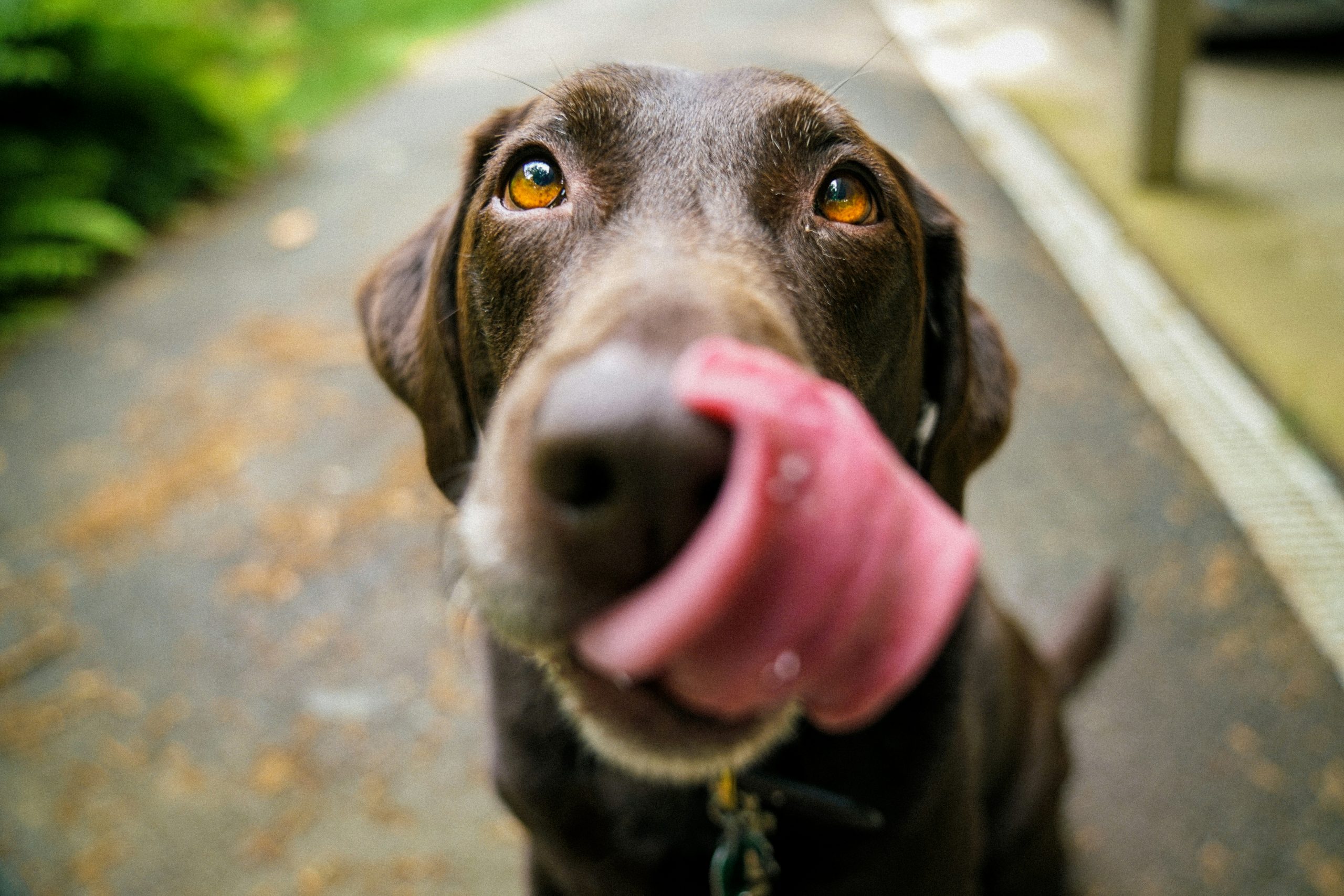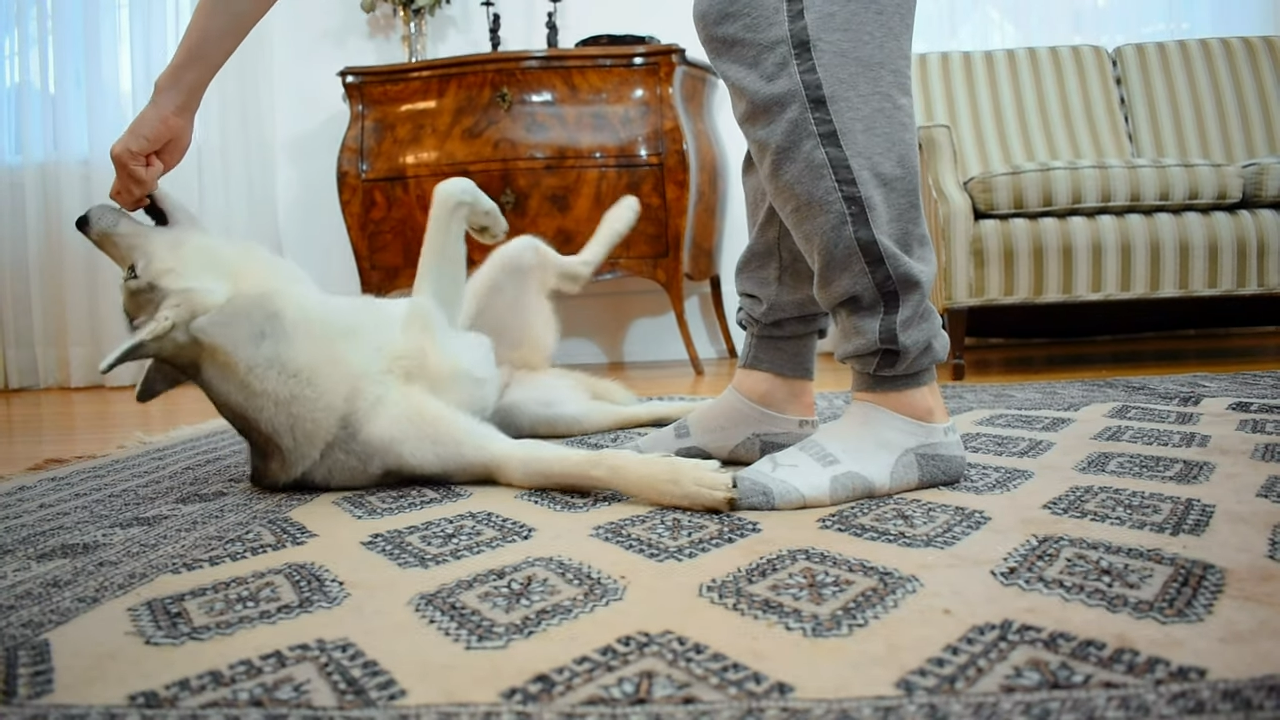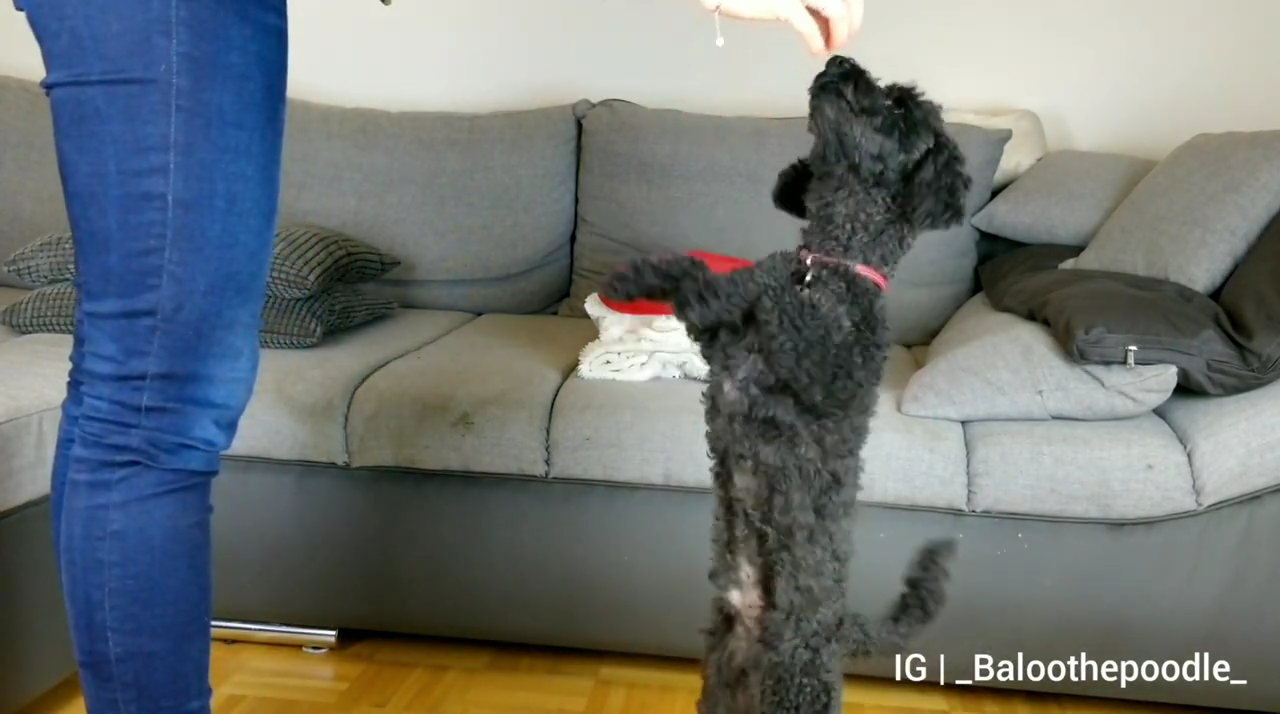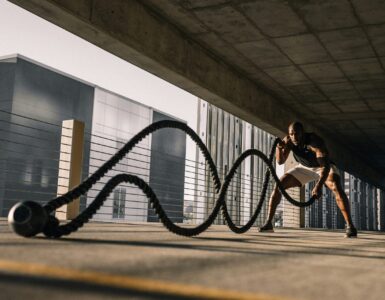Dogs are not the most mysterious of creatures. Unlike humans, they do not delineate boundaries, they are seldom subtle in their expressions, they are not bred to be particularly deceitful creatures. If a dog is happy, it is difficult for him to contain his delight. If a dog is somber, his sorrow will be illuminated very clearly through his behavior.
If you are having difficulty, however, in interpreting the general mien of your puppy, we’ll provide an assist in helping you to understand your furry companion. Below is a list of several common gestures made by dogs during their everyday routine and what they could potentially indicate.
Wide Mouth, Tongue Lolling

The expressions of our canines often intimate the same emotions we feel when we make a particular facial or physical gesture. For instance, if a person is smiling, they are either genuinely happy, or at the very least attempting to intuit happiness.
It is the same for dogs. If, on a sunny day, you and your furry companion are conjoined together on a mutual walk; and his lips are exuberantly upturned, his tongue hanging from his mouth in lackadaisical fashion: It is inherent to assume that your dog is experiencing serenity, contentment, or even outright elation. His senses are piqued, the smells of nature are percolating through his nostrils, the sounds of other living creatures are ambient amongst the soundwaves, and he’s in close proximity to his pack. It is unlikely your puppy is anything but a happy camper.
Pawful Playfulness

Many dogs intrinsically raise their paw, at distinct points in time, if you possess an item that they covet. They are very clearly directing their pack-leader to their object of desire or affection.
For instance, with my own pup, “Spud,” I learned very early that if I possessed food, or a dog treat, he’d characteristically raise his paw in anticipation. He was very clearly stipulating to me “I want that, please.” Being a selfish and exploitative dog owner, I used this character quirk to my own advantage, quickly establishing an association between the word “paw” and the efficient transfer of a dog treat to dutiful Spud. He now appropriately expects the reception of a treat should he lift his paw respectfully.
Sleepy Pup?

What does it mean when a dog yawns incessantly? Could it possibly mean that they aren’t receiving enough beauty rest? Is your dog aggravated or perhaps bored with your mundane and fatuous antics?
Likely not. A yawn can actually convey a variety of meanings. For one, it can counterintuitively signal that your dog is overstimulated by his environment and is actively attempting to quell the burden of his excitement.
It can also mean, in another context, that your dog is confused. If you are attempting to signal to your dog to accomplish a particular task and objective, and he isn’t interpreting gestures succinctly, he may yawn to display his palatable exasperation. This is frequently displayed during training sessions, while you are attempting to inculcate a new skill within the cognitive lockbox of your pup.
Finally, yawning can also signal that your puppy is relaxed. Oftentimes, my pup Spud yawns repeatedly while he is in the process of receiving excessive belly rugs. By yawning, he’s merely showing his staunch approval of my actions.
Sanitize Those Lips

Dogs lick their lips primarily to show appeasement to other canines, humans, or creatures they are interacting with. It is a distinguishing signal meaning that your dog is anxious, intrigued, or nervous about an impending encounter. Perhaps they’re in a dog park, staying at the home of an unfamiliar person, visiting the veterinarian or groomer, or are simply anxious upon trespassing upon a novel domain.
Whatever the case, if your dog is licking their lips, provide them some necessary comfort to assist them in soothing their disposition.
Rolling On Their Backside

A dog rolling on their back is often regarded as a signal of submission. The dog, according to some, is obsequiously acknowledging his deference to his owner.
The reality of the gesture’s meaning, however, is slightly different. By displaying their vulnerable bellies to whichever human they’re presently encountering, a dog is actually indicating that he is no threat to that person, he will not pounce, nor display any sort of antagonistic behaviors. It’s a comforting gesture, one that shows the dog both trusts and respects you.
Depending on the context, a back-roll can illuminate several other things about your dog’s disposition. If he’s familiar with you, a back-roll can be used as a hearty genuflection of welcome. In simpler terms, your pup is markedly rapturous that you have returned home from whatever respective adventure you’ve been pursuing throughout your day. It’s a marker that he is happy to see you and serves as a manifest invitation from your pet for well-deserved attention.
Bared Teeth

It can be disarming to view your dog bare his teeth at someone, or even at you. It is, rightfully, interpreted as an expression of fear and the potential for aggressive behavior. If a dog feels threatened by a novel item or person in his environment, baring his teeth is often an acute warning meaning “please back off, or I may bite.”
Common causes for the installation of such fear can include numerous things, including the variable mentioned above – A perceived unstable space. Other instigators can include a dog protecting what he regards as his own personal resources: his food, toys, or territory. A dog in this situation may view you as encroaching on his property; and if he’s not trained properly, that can quickly become an untenable situation, especially if one has children.
If you do view your dog consistently baring his teeth, identify the potential sources in his immediate environment that are triggering it. Remove what you have identified as a potential catalyst for his aggression, which should quickly diffuse the tension latent in such a situation.
Hind-Legged Hello

When a dog rears on its hind legs, almost playfully dancing, it is a sign of eager affection and interest. Perhaps your pup has awaken from an hour-long stupor and is now appropriately energized, ready to galivant outside or fetch a ball. Perhaps you’ve been away from your apartment for a protracted amount of time, and he’s merely enthused upon seeing you. Whatever the case, if your pup suddenly stands upright, akin to his human counterparts, do not be dismayed – He, again, is simply expressing his zest and joy.
Head Tilt

One of the most endearing gestures a dog can make is simply tilting his head to the side inquisitively. A simple analysis of this action would lend itself to the proper conclusion that, for whatever reason, your dog is engaged and curious about the content of his surroundings. Much like humans, who nod to demonstrate their grasp of a subject, a dog tilts his head to elucidate that he is attempting to comprehend something.
Dogs, like humans, analyze the body language of their owners to understand them. Complicating this process is the presence of their often-long snouts, which impair their vision. Dogs, when they are either confused or curious about something, tilt their heads to expand their range of vision. It allows them to visualize, more clearly, whatever the object of their scrutiny is.



